Normative Data in Youth Academy Football: Impacts on hip and groin injuries.
Available in:
EN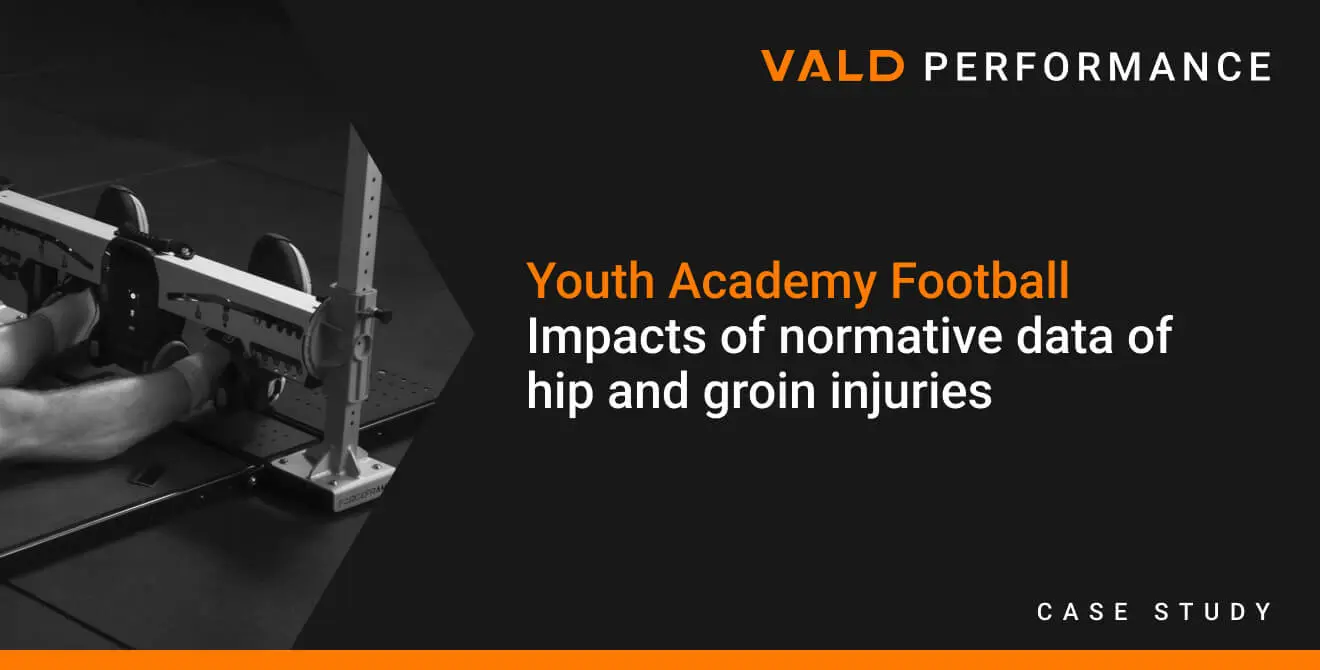
Impacts on hip and groin injuries
Recently, Football QLD and Alta Allied Health Physiotherapists Brad Moore and Sasha Birge completed an innovative project that collected the first normative dataset for strength and jump performance in Australian youth academy footballers using ForceDecks, NordBord and ForceFrame. The dataset will not only help identify at-risk athletes but also provide benchmarks and criteria for rehabilitation decisions for those that are injured. Most notably, they found that youth athletes with adductor strength more than 30% higher than their abductor strength were more likely to have hip or groin pain – an easy-to-understand, easy-to-measure and easy-to-action takeaway for football physiotherapists and coaches.
Youth athletes with adductor strength more than 30% higher than their abductor strength were more likely to have hip or groin pain – an easy-to-understand, easy-to-measure and easy-to-action takeaway for football physiotherapists and coaches.
Injuries in youth football
In adult football athletes, the hamstrings are the most frequently strained muscle group, by far, accounting for 39.5% of all muscle strains and 16.3% of all injuries. In youth footballers, however, hip and groin injuries are more prevalent (Le Gall F et al., 2006) and adductor injuries in particular have a high recurrence rate (Ekstrand et al., 2011; Jones et al., 2019). Further, the incidence rate of adductor-related groin pain in football over the past 15 years has not reduced, and prevalence has increased (Jones et al., 2019).
In youth football … adductor injuries in particular have a high recurrence rate … the incidence rate of adductor related groin pain in football over the past 15 years has not reduced, and prevalence has increased
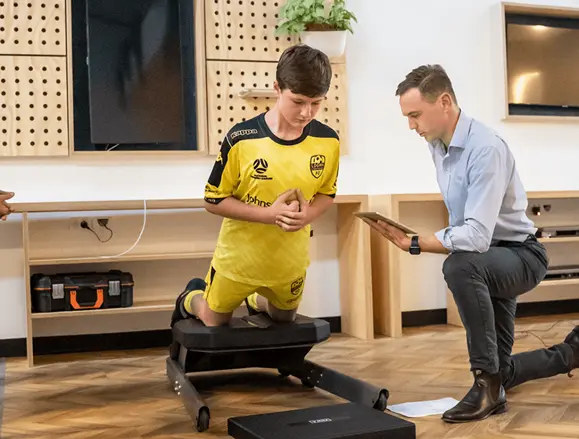
This motivated Brad, Lead Physiotherapist of Football QLD, to embark on a mission to collect data on as many youth footballers in the Football QLD program as he could. Along with Sasha, a physiotherapist himself at Brisbane-based Alta Allied Health, their aim was to see if they could understand why – despite many advancements in sports medicine – adductor related groin pain was still a prevalent issue for not only his players, but also for youth footballers globally.
Data Collection
The pair and their team used ForceDecks, NordBord, and ForceFrame to collect objective measurement data on approximately 200 athletes over the course of two seasons. This data would become the basis for a normative dataset on Football Queensland athletes, and given the number of athletes involved, they knew it would likely prove informative for other youth football leagues and teams. The team compared the objective measurements of each athlete with injury data recorded over the season to determine any significant risk factor findings. The following tests were conducted on each athlete at multiple time points:
Test 1: Countermovement jump (ForceDecks)
Test 2: Nordic eccentric hamstring strength test (NordBord)
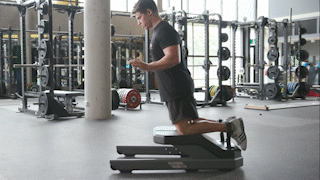
Test 3: Supine, long lever adduction isometric strength test (ForceFrame)
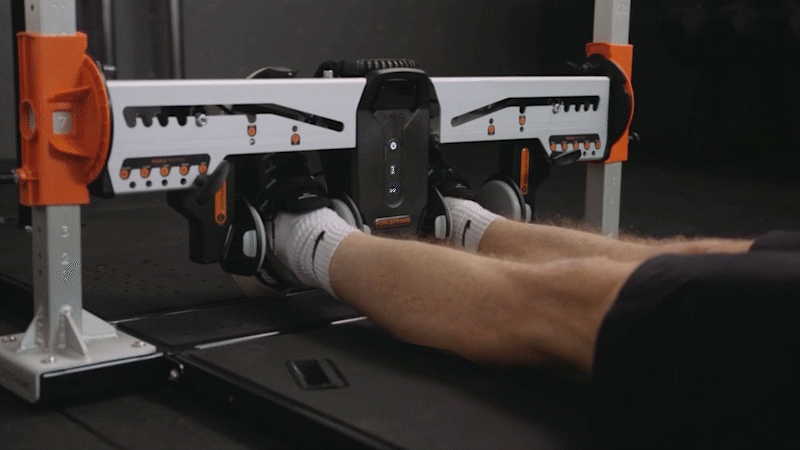
Test 4: Supine, long lever abduction isometric strength test (ForceFrame)
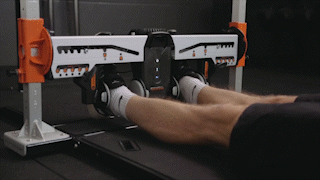
What were the key results?
From their analysis they found:
- Athletes with more than 30% greater adductor strength than abductor strength (i.e. adduction:abduction strength ratio of greater than 1.3:1) were more likely to have groin pain; and
- There were limited changes to abduction strength over the season; but
- There were noticeable reductions in hip adductor strength for both limbs over the course of a season.
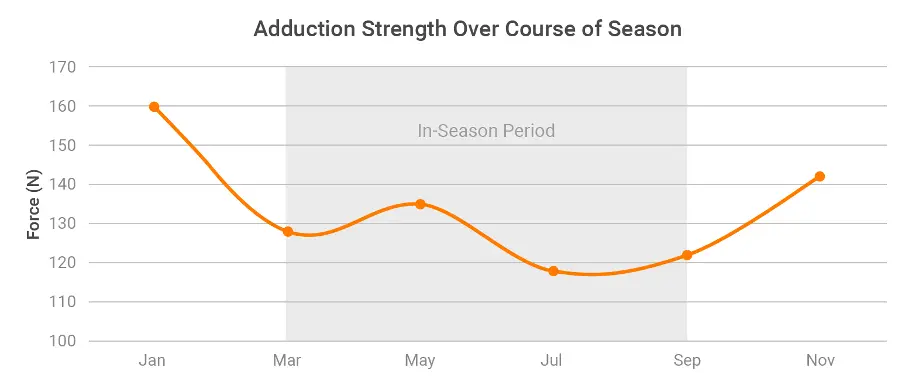
Detailed Age Group Results
The team observed clear trends across the age cohorts they assessed, leading not only to the above mentioned insights on hip strength and pain, but also providing informative normative datasets that will form helpful reference points for future seasons.
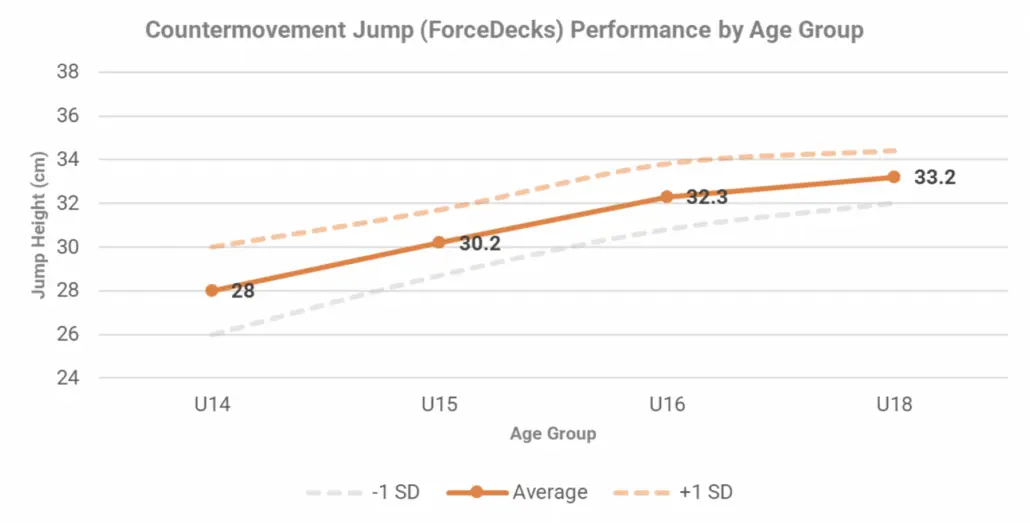
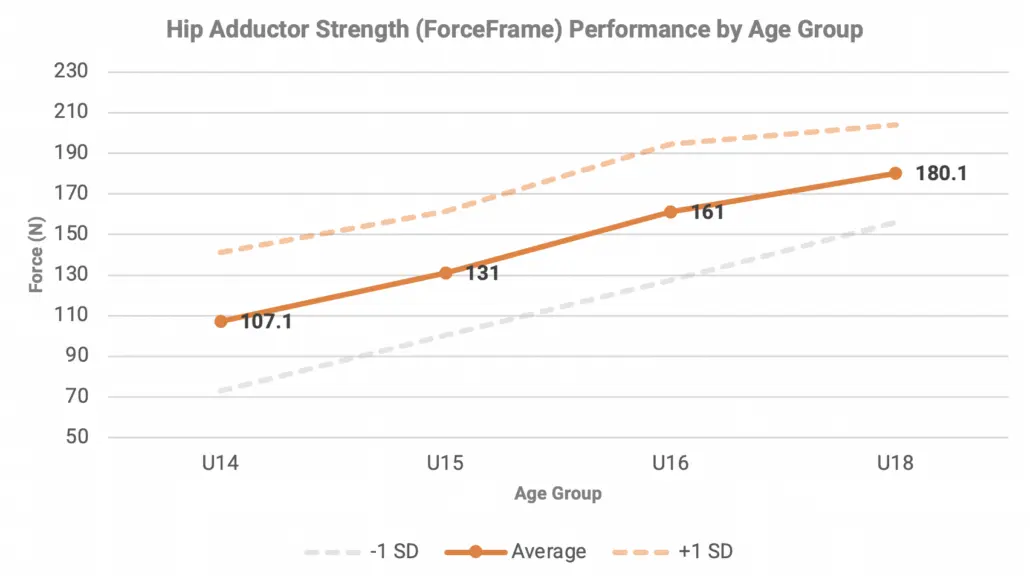
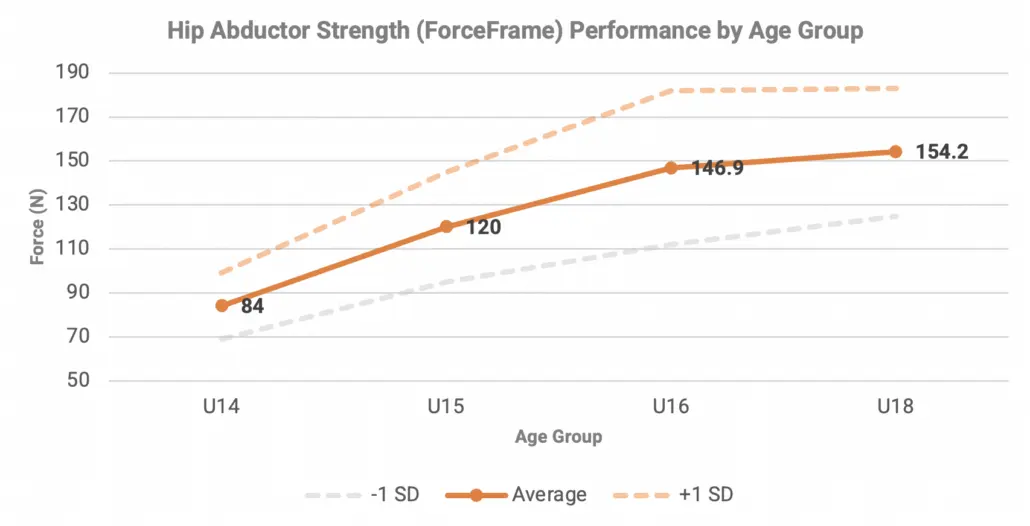
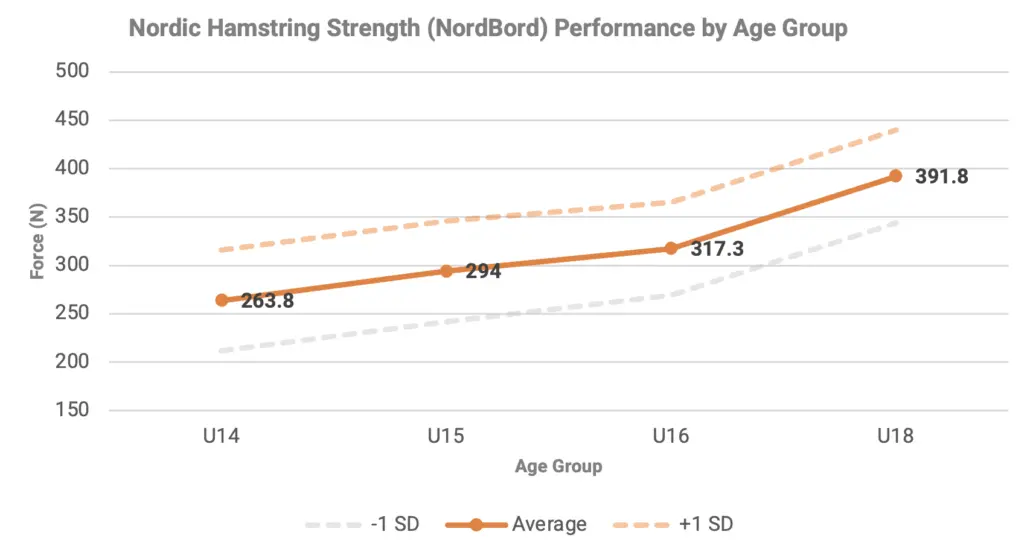
What does this mean for my athletes?
Measuring athletes objectively with VALD systems provided Brad and Sasha with highly-actionable data that can now be used to inform their clinical decision making and strength and conditioning programs.
The pair’s testing and analysis from 200 Australian youth footballers provided three key applications that can be used by health professionals and strength and conditioning professionals immediately:
1. Youth footballers with 30% greater adductor strength than abductor strength should be given exercise intervention programs focused at reducing the ratio to below 1.3:1, ideally by strengthening the abductors.
This is important for both an injury prevention and rehabilitation perspective. By identifying the risk factor of the muscle group imbalances, programs can be tailored to improving this ratio, with the goal of reducing the risk of injury.
2. Adduction strength reduces over the course of the season, potentially leading to an increased risk of injury. Proactive strength and conditioning programs should aim to address this with strength maintenance exercises.
Existing literature shows us that there is a correlation between poor adductor strength and adductor related groin injuries, so reductions in strength over the course of season suggest that athletes’ risk of injury may increase accordingly. For this reason, testing and intervention programs should be set up to not only assess strength in the pre-season, but also to monitor over the season. This more consistent monitoring may help identify at-risk athletes sooner, allowing staff to intervene with targeted strength and conditioning programs, with the goal of addressing deficits before they become injuries.
3. Normative data can be used as a benchmark to both improve athletic performance and to assist with rehabilitation goal setting. Normative data is particularly useful if an athlete has not been tested previously, providing critical context to testing data.
Every athlete wants to compare themselves to their peers, so normative data can be tremendously powerful in building buy-in and driving adherence in athletic cohorts. For coaches, normative data can help identify athletes with deficits and build tailored exercise programs to help address them. In turn, this can yield efficiency benefits for busy coaches, allowing them to triage athletes into groups and deliver exercise programs which are tailored to the athlete without requiring entirely different programs for each individual.
Finally, should an athlete suffer an injury, these benchmarks can be particularly useful in rehabilitation, guiding decisions on when to progress, when to change course, when to rest and ultimately when to return to play.
It is for these reasons that Brad and Sasha set out to study their athletes, so that they could not only glean insights into their own players and improve their own practice moving forward, but also that they might share these findings with others in the hopes of raising the standard of proactive injury management and player welfare in youth footballers.
If you would like to know more about this program or how you could use VALD technologies in your organisation to help monitor and manage your athletes, please drop us a line.
